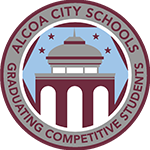Why Go Digital-First? Three Powerful Reasons
🎧 Listen to the Audio Deep Dive
1. ⏱️ More Time to Teach
Let's be honest: How much of your valuable planning and instruction time is lost to paper management?
- No More Copy Machine Queue: Stop waiting for the copier, fighting paper jams, or finding out the toner is low. Digital distribution is instant.
- Faster Feedback and Grading: Using tools in your Learning Management System (LMS) or annotation apps allows you to provide in-line, multimedia feedback (audio, video, text) faster than handwriting. The digital workflow is seamless: Assign, Submit, Grade, Return.
- Instant Organization: No more piles of paper to file! Documents are automatically saved, organized, and searchable in the cloud for both you and your students. This is a game-changer for organization and reducing lost work.
2. 🚀 Enhanced Student Engagement and Differentiation
Digital tools do more than mimic paper; they transform learning.
- Interactive and Dynamic Content: Digital assignments can integrate embedded videos, interactive simulations, and real-time collaboration that a static worksheet can't. This makes lessons more engaging and relevant to our "digital native" students.
- Seamless Differentiation: You can easily assign tiered readings, provide extension activities, or offer supports to specific students without anyone else knowing. Personalized learning becomes a reality, not just a buzzword.
- Future-Ready Skills: Students are practicing the digital literacy, collaboration, and document management skills they will absolutely need in college and the modern workforce.
3. 🌐 Efficiency and Accessibility (Anywhere, Anytime)
Moving to digital workflows significantly improves operational efficiency and access for everyone.
- Access on Demand: Gone are the days of forgotten binders or heavy backpacks. Every note, handout, and textbook is accessible anywhere they have internet access.
- Streamlined Document Management: Digital files are backed up to the cloud. A student's work is safe, secure, and accessible, reducing the stress and consequences of lost papers. For teachers, all resources are stored centrally and are immediately available for reuse or modification.
- Built-in Features: Most devices and platforms offer tools like screen readers, adjustable font sizes, and voice-to-text. These features can significantly aid student comprehension and production.
How to Start the Digital Shift Today
Making the transition doesn't happen overnight, but you can start with small, high-impact changes.
- Stop Printing Handouts You Don't Write On: Is it just information? A schedule? A link? Post it on your class website or LMS announcement page. Make a rule: If you don't write on it, don't print it.
- Utilize Annotation Tools: Instead of printing a worksheet or a PDF primary source, upload it to your LMS or a PDF annotation app. Students can highlight, type, draw, and submit digitally.
- Start with the "Low-Stakes" Work: Begin the digital shift with quizzes, bell-ringers, or quick exit tickets. Once you and your students are comfortable with the submission process, move to larger assignments.
- Embrace the "Messy Middle": It's okay to still use paper for certain activities, like brainstorming, mind-mapping, or complex math work where a pen is simply faster than a keyboard. The goal is digital-first, not digital-only.
The devices are in the hands of your students. Let's make sure we're using this powerful investment to simplify our workflows and create richer, more engaging learning experiences.
